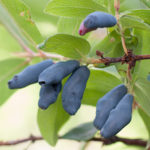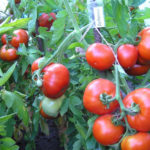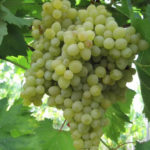Rose to Sins Thomas (Graham Thomas)
English roses are the crown of grace. They have an aristocratic appearance and unsurpassed tenderness. One of the more popular varieties in this category is the Graham Thomas rose. This type of flower queen is in many ways unique, in what exactly - our article will tell.
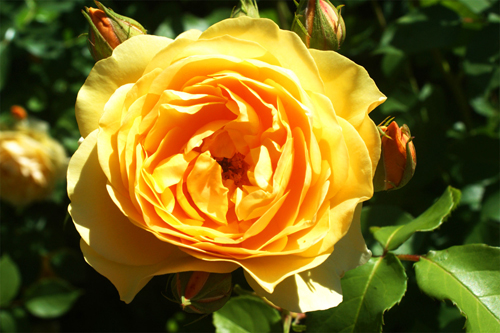
History of appearance
The place of origin of this culture is the nursery of David Austin. A well-known British breeder bred this variety in 1983. In the name of the flower, he immortalized the name of his friend Graham Thomas, also excellently versed in roses. The variety appeared thanks to the crossing of roses "Iceberg" and "Charles Austin". At one time, at the Chelsea flower show, the plant attracted admiring glances and received the highest marks. The native inhabitants of England often choose the opened buds of this variety for a gift to their lovers. The fact is that in Great Britain there is a romantic tradition, according to which a man gives his beloved two yellow roses, thus confessing his own feelings for her. The flowers of this rose are the best suited for such a case, since they have the appropriate color. Another name for the culture sounds like "AUSmas".
Description of the variety
The adorable Briton grows as a strong, powerful shrub with long, arched shoots and glossy yellow-green foliage in the beginning and dark green in the future. The average height of a perennial is 100 cm, the maximum can reach 150 cm, in hot countries - up to 3 m.The culture reaches 100 - 120 cm in diameter.In the warm season, the plant acquires delicate peach buds with a reddish tint in size from 7 to 10 cm, formed in inflorescences of 3, 5 or 8 pieces. At the moment of blooming, they turn into double cup-shaped flowers of an old form, up to 12 - 15 cm in diameter, consisting of 75 - 80 curved petals, slightly opening the core of the bud for prying eyes.
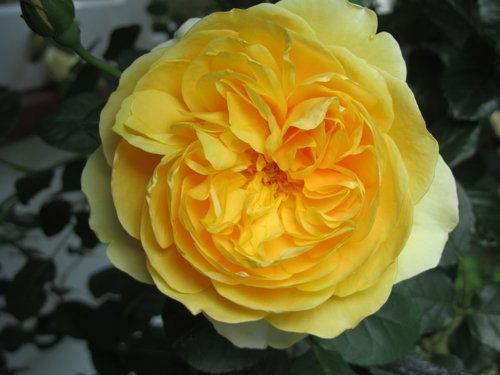
The color of the flowers can be described as warm yellow, but the shade around the edges of the petals is noticeably lighter. Culture inflorescences smell good. Their fresh, strong aroma with sweet notes evokes the most pleasant emotions. The shoots of the noble plant droop slightly, which is why it can be cultivated as a climbing variety. The flowering of the decorative perennial lasts all summer and is wavy in nature. It is especially plentiful in June, then becomes moderate and remains so until the end of the season.
Unfortunately, the beautiful flowers of the English diva are not suitable for cutting - the rose petals quickly crumble. But for gardens and parks, this shrub is simply ideal: the plant has an average resistance to diseases and good winter hardiness (withstands frosts down to minus 23 ºС). The flowers of the variety inevitably fade over time and under the influence of sunlight, acquiring a light yellow tint. They are slightly damaged by rain.
Features of agricultural technology
Graham Thomas variety can be planted both in a sunny area and in partial shade. However, exposure to direct sunlight on a perennial throughout the day is best avoided so that the inflorescences of the rose bush do not lose their decorative effect. 5 - 6 hours a day of intense natural light for a plant for normal growth, development and flowering is quite enough. Choose a location for placing the crop where there is good air circulation, but at the same time there are no cold drafts.
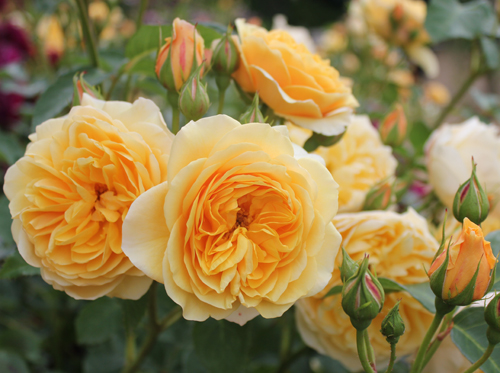
The flower prefers light, loose, fertile soil with a slightly acidic reaction (pH in the range of 5.6 - 6.5). To acidify and improve the garden soil, compost, humus, turf soil and peat are added to it. In the area where you plan to plant the plant, the groundwater level should not be higher than 1 m.
The English beauty is very demanding to care for.
First of all, she needs regular watering. It is carried out in a moderate mode, as the top layer of the soil dries up in the zone of the near-trunk circle. For irrigation, use soft, cool water.
Also, the plant needs feeding.This procedure is shown to the culture in the spring (organic matter is introduced under it), during the period of setting buds on a perennial and at the peak of flowering of a rose bush (preference is given to concentrates rich in phosphorus, calcium and trace elements), as well as in early autumn (potash fertilizer is used).
Pruning should involve diseased, dead, too long shoots (unless you plan to grow a rose as a climbing variety) and faded buds. This event takes place in spring and summer. Before the onset of winter, a strong pruning of the rose bush is made, then they spud it with dry earth, and cover it with foliage on top and cover it with spruce branches.
Use cases
Rose Greham Thomas is suitable for planting near gazebos, in the borders on the sides of garden paths, in mixborders and in classic flower beds. With its help, it is easy to build a hedge. You can also put a rose on a support: for example, a small arch, pergola. In flower beds, it is better to place it in the background. In this case, the culture will look great against the background of annuals with flowers of contrasting shades: petunias, verbena, forget-me-nots. In mixed compositions, delphinium, asters, sage, lavender, katran, catnip, miscanthus, clematis will become excellent companions for our heroine. The noble plant looks especially harmonious in the company with the owners of lilac, purple, blue and blue buds.


